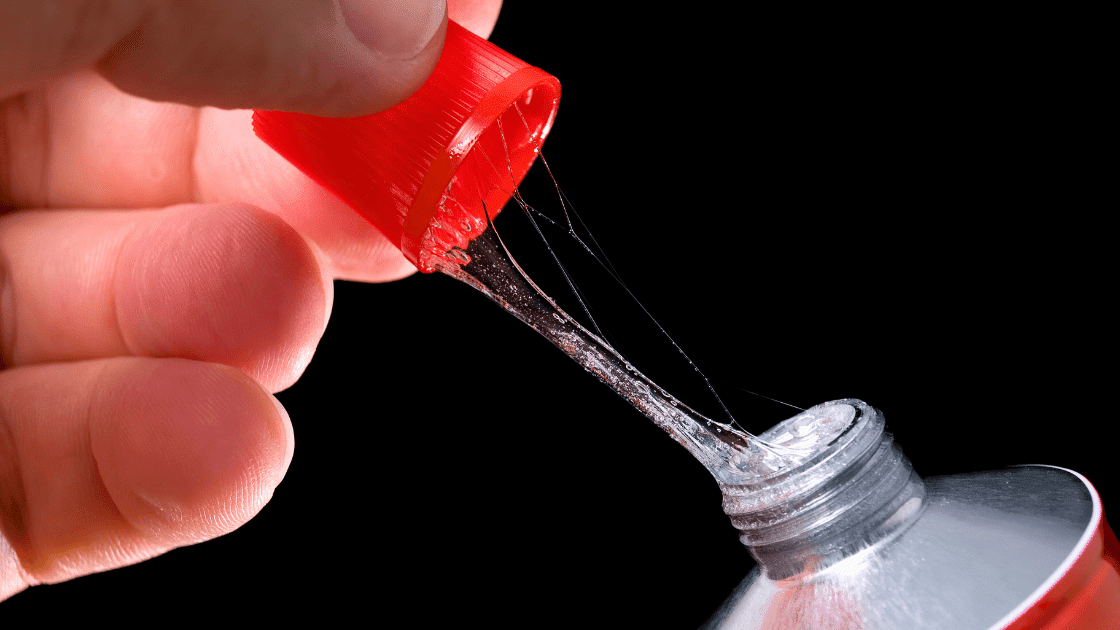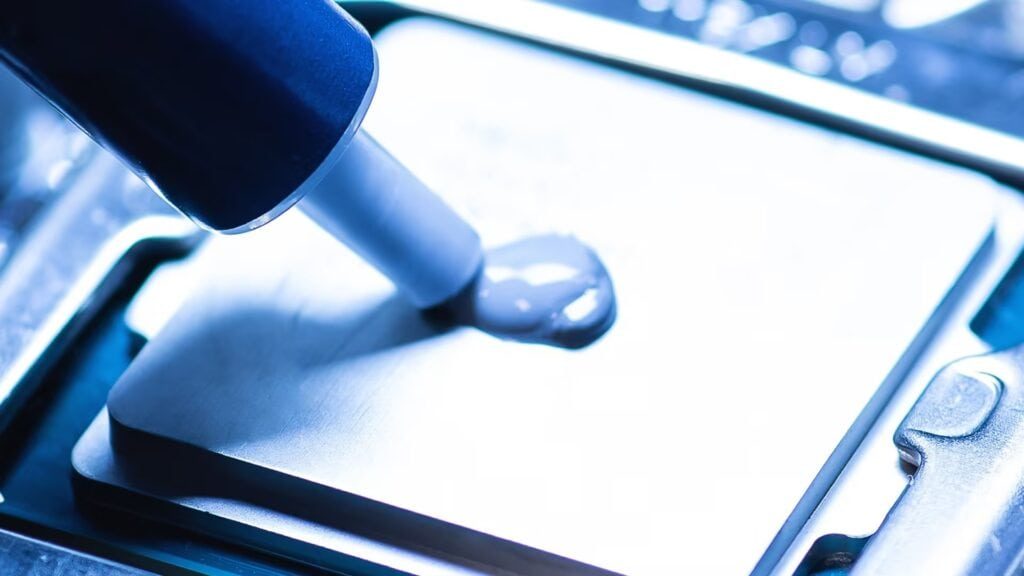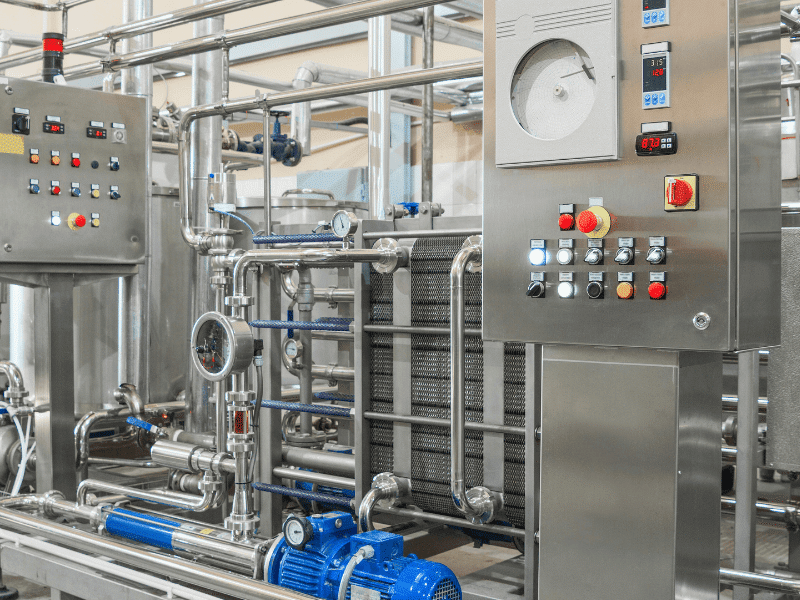Acrylic glue is a multipurpose adhesive. It quickly dries and gives a clear finish. This glue bonds well, especially to wood, plastic, and paper. However, it is less strong than epoxy for high-stress parts.
Epoxy works well on non-porous materials (metal or glass). Even so, it takes more time to dry and is not easy to work with.
In this article, learn which glue is best to use based on your product demands and materials.
What is Acrylic Glue?
The manufacturers make acrylic glue using acrylic polymers. These polymers give strong bonding, adaptability, and seals. They use this glue in many sectors like construction, automotive, and crafts for joining plastics, metals, and more.
A. Composition of Acrylic Glue
Ethyl cyanoacrylate (50-60%) and methyl methacrylate (20-30%) are the base polymers of acrylic glue. However, this formulation may vary by application.
Ethyle quickly bonds and offers a strong hold. Meanwhile, methyl adds longevity and provides effective resistance. Combining them produces a very strong adhesive solution.
Additionally, manufacturers add plasticizers (5-10%) for adhesion, thickeners (2-5%) for viscosity, and fillers (10-20%) for strength.
For instance, this image shows acrylic pressure-sensitive adhesives (PSAs) with maleimide. This is formed through free radical polymerization at 78 °C for 6.5 hours. It also depicts how hydrogen bonding improves stickiness strength and tape preparation processes.
B. Types of Acrylic Glue
Liquid
Liquid glues have a viscosity (glutinous consistency) of around 100-5,000 cP (centipoise). These adhesives easily flow for sharply defined parts. They usually take 30 seconds to 2 minutes to dry. You can use this liquid-form glue for tasks like bonding small parts or electronics.
Gel
Gel adhesives are much thicker. They have a viscosity of as much as 10,000–100,000 cP. Unlike acrylic, it does not simply evaporate and takes longer (30 minutes or more) to dry. This is because gel depends on chemical reactions to harden. You can use these glues for vertical or overheated surfaces. They perfectly fill the gaps of uneven surfaces and do not grip.
Spray
Using spray adhesives, you can cover an area of 5–50 square inches per spray. It dries in 1 to 3 minutes. This acrylic spray easily spreads over larger areas. However, it is not recommended for detailed work like complex models or electronics.
C. Benefits of Acrylic Glue
Flexibility
Acrylic glue contains good flexibility. You can stretch them up to 30% of their length without breaking, making it a good option for stretchable and stress-absorbing parts.
Water Resistance
This glue provides excellent sealing and resists water. Additionally, you can use it for outdoor parts because it can tolerate prolonged exposure to water.
Ease of Use
Acrylic glue is easy to use and dries quickly. It allows for the successful completion of the project. You also have an open time of up to 2 minutes so that you can correctly make adjustments during application.
What is Epoxy?
Epoxy is a strong and versatile bond. It is made with synthetic resins. Manufacturers use this glue for industries like construction, automotive, and electronics. Epoxy offers high strength, resists hazardous chemicals, and lasts longer.
It works more impactfully when combined with a resin and a hardener. This combination chemically reacts to form a solid and durable bond.
Adhesive Properties and Performance
This graph demonstrates how changes occur in adhesives under humidity. For instance, graph (a) shows acrylic absorbs moisture quickly at higher humidity levels and then stabilizes. Similarly, graph (b) depicts that epoxy desorbs initially and then stabilizes faster compared to acrylic.
A. Composition of Epoxy Glue
Together, resins and hardeners form epoxy glue. Common resin is comprised of Bisphenol A epoxy (60–70%) and novolac epoxy (20–30%). This composition offers strong bonds and resists heat and chemicals.
Hardeners like amines or anhydrides (10-20%) improve the thickness and initiate the curing process. They ensure the bond sticks well and gets full strength.
Comparison Table of Acrylic Glue vs. Epoxy
| Feature | Acrylic Glue | Epoxy |
|---|---|---|
| Bond Strength | Moderate to High (1,500 - 2,500 PSI typically) | Very High (3,000+ PSI, can exceed 10,000 in some formulas) |
| Curing Time | Fast (seconds to minutes, some formulas up to 30 min) | Slow to Moderate (minutes to hours, up to 24 hours) |
| Flexibility | Excellent | Low to Moderate (becomes rigid after curing) |
| Durability | Good, especially against UV and weathering | Excellent, especially against chemicals and impact |
| Water Resistance | Good | Excellent |
| Chemical Resistance | Moderate (some solvents can affect it) | Excellent (resists many solvents, acids, and bases) |
| UV Resistance | Excellent | Poor (can yellow and degrade with prolonged UV exposure) |
| Temperature Resistance | Moderate (generally -40°F to 200°F) | Wide range, some formulations -40°F to 300°F and beyond |
| Impact Resistance | Moderate | High |
B. Types of Epoxy Glue
One-component
One-component epoxy is kind of premixed. They cure when face heat. These glues are convenient for industrial use.
Two-component
Manufacturers prepare this epoxy by mixing resin and hardener. They use ratio ranges 1:1-2:1. This glue is versatile and perfect for parts needing custom curing times or strengths.
Heat-cured
This epoxy is cured at higher temperatures. That typically ranges between 120°C-200°C. It provides strong adhesion and resists external elements.
C. Benefits of Epoxy Adhesives
Strong Bond
Epoxy bonds are very strong (more than 3,000 psi). The psi varies depending on the type and formulation. This glue can hold intense loads or high pressures better. You can use them to make strong joints in industries like construction or automotive repairs.
Chemical Resistance
Epoxy handles harsh chemicals such as acids, alkalis, and solvents and stays unaffected. Therefore, you can use them in factory areas or where chemicals might spill or react.
High Durability
Epoxy resists rain, sunlight, and wind, performing well in high temperatures (-40°C to 150°C). It does not crack, melt or lose its bonding ability. This makes them the perfect option to use for outdoor applications.
Key Differences Between Acrylic Glue and Epoxy
Strength Peel
Epoxy adhesives offer extremely high bond strength. This is why it is ideal for heavy-duty tasks. For instance, repairing metals, concrete, or wood in industrial settings.
Conversely, acrylic makes moderate-to-high-strength (1,500 to 2,500 psi) bonds. It is more appropriate for lighter applications. For example, plastics or glass.
Epoxy lasts longer under high loads, while acrylic may lose its bonds faster when used for heavy stress.
Flexibility
Acrylic offers excellent flexibility in parts that may bend or move, such as plastics or fabrics. It absorbs impacts and vibrations without causing cracks.
In contrast, epoxy glue forms a strong bond once dried. It makes stable connections in static conditions but has less adaptability to movement.
Curing Times
Acrylic glue takes shorter curing times (5 to 30 minutes). You can use it as a quick option for projects that need fast results.
Epoxy can take longer (30 minutes to 24 hours) to cure. The time is also based on a formula and environmental conditions.
Solvent Resistance
Epoxy resists chemicals and endures exposure to harsh acids, alkalis, and solvents without weakening. This is a better choice to use in industrial and laboratory environments.
Somehow, acrylic handles some chemicals. However, it fails to match epoxy’s performance in highly acidic environments.
UV Stability
Acrylic glue resists UV radiation better. Therefore, this glue is preferred for outdoor parts where exposure to sunlight is constant.
In comparison, epoxy turns yellow due to UV exposure. It weakens over time and needs treatment like UV-resistant coatings or additives.
Temp Range Resistance
Generally, both glues react uniquely to environmental conditions. Meanwhile, acrylic works well in a wide heat range. They adapt better to changes in humidity. This glue doesn’t change its effectiveness in typical weather conditions.
Although epoxy can handle extreme temperatures and offer reliable performance, It needs careful application in humid conditions. For instance, high moisture increases the curing process.
Impact Toughness
Epoxy bonds last longer than acrylic glue. They remain strong for many years, especially in stable parts. Acrylic does stay durable, especially if it’s exposed to high pressure or movement.
Cost
In comparison to cost, acrylic glue is usually cheaper. It is about 20–30% less expensive than epoxy adhesive.
Choosing the Right Adhesive for Your Project
Surface Type
Surface types matter when choosing suitable glues. For instance, you can use epoxy for metal and concrete and acrylic glue for plastics or rubber surfaces.
Environmental Conditions
The environment impacts the adhesive’s durability. Epoxy works better in high-humidity areas because it resists moisture. But it needs UV protective coatings to resist constant sunlight.
On the other hand, you can use acrylic glue for moderate environments with fluctuating temperatures. It is also a better choice for outdoor projects where UV exposure is concerned.
Desired Strength
Adhesive choice also depends on project strength. Epoxy offers higher strength for heavy loads or structural parts. Acrylic glue performs well in lighter tasks or materials that need flexibility.
Glue Compatibility Chart
This adhesive glue compatibility chart will help you find the best option for your material. A filled circle shows the best compatibility, while an unfilled circle suggests glue works well under certain conditions.
For example, “quick-cure” glue bonds work best for lighter materials like balsa wood, while “slow-cure” performs better with dense materials like hardwood.
Tips for Working with Acrylic Glue and Epoxy
Surface Preparation
Surface preparation increases bond strength by 20–50% and lasts longer. Remove oils or dust from surfaces with a solvent like isopropyl alcohol.
Sanding improves bond strength for tough materials (wood or metal). Create a better surface for the glue to stick well.
Application
Spread the glue evenly on weak spots using applicators or brushes. Cover each section without excess.
Gently mix adhesives, resin, and hardeners. Apply carefully to parts, avoiding air bubbles because they weaken the bonds.
Furthermore, porous materials (wood or fabric) absorb glue. Apply a sufficient amount and fill the gaps.
Curing
You can take guidelines from the adhesive’s curing instructions. Allow proper drying time to glue for full strength. Also, epoxy adhesives need certain curing conditions. For instance, avoid cold or humid environments to minimize delay or weaken the bond.
Common Mistakes
Do not apply too much adhesive or rush drying for acrylic. This can weaken the bond. Add an appropriate ratio of both epoxy glue components.
Avoid applying glue in cold or damp conditions. That can affect the strength of the bond. Additionally, carefully measure the amount and work in ideal conditions.
Precautions
Safety precautions are important when applying either bond. Particularly, epoxy glue forms strong fumes during mixing and curing. That irritates the skin. So mix them in outdoor or ventilation areas and use safety measures.
Conclusion:
Both acrylic and epoxy glue are used to bond several material parts. In particular, acrylic glue is cost-effective and suitable for lighter parts like wood, plastic, or fabric. Conversely, epoxy glue is perfect to use on metal parts and stays longer than acrylic.
You should choose good adhesive for any project, but the question is how? At Jiuju, you will get a comprehensive range of both acrylic and epoxy adhesives. Doesn’t matter if you prioritize a quick, clean bond with acrylic or epoxy, our company provides impeccable product quality. Get a quick quote for our product range.
FAQs
What is the Complete Technical Comparison Between Epoxy and Acrylic Adhesives?
Epoxy Characteristics:
- Tensile strength: 1,000-4,000 psi
- Temperature range: -40°C to 150°C
- Curing time: 24-48 hours
- Molecular weight: 3,000-50,000 g/mol
Acrylic Characteristics:
- Tensile strength: 500-2,500 psi
- Temperature range: -40°C to 120°C
- Curing time: 10-30 seconds
- Molecular weight: 2,000-10,000 g/mol
What are the Complete Chemical Differences Between Acrylic and Epoxy Adhesives?
Acrylic Adhesive:
- Base: Methyl methacrylate
- Polymerization: Radical mechanism
- Crosslinking: Secondary
- Bond formation: Rapid
- Molecular interaction: Surface-level
Epoxy Adhesive:
- Base: Epoxide resin
- Polymerization: Condensation reaction
- Crosslinking: Primary
- Bond formation: Gradual
- Molecular interaction: Penetrative
What are the Comprehensive Disadvantages of Acrylic Adhesives?
Technical Limitations:
- Elastic modulus: 2-3 GPa
- Creep resistance: Limited
- Moisture sensitivity: High
- Chemical stability: Vulnerable
- UV degradation threshold: Low (120°C)





